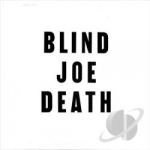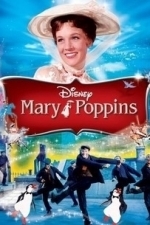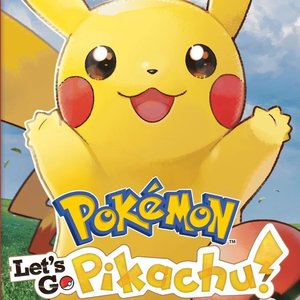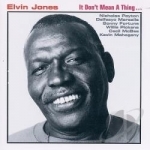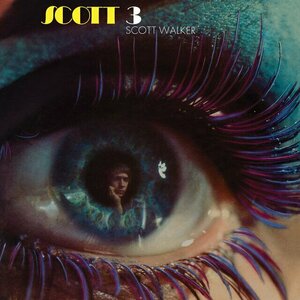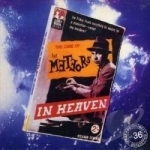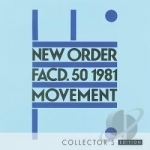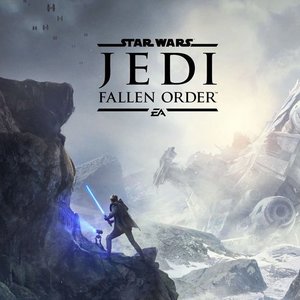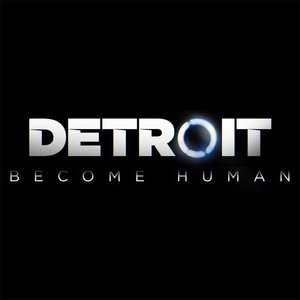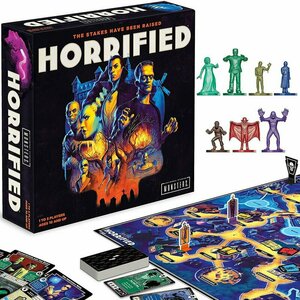Search
Search results
Lee Ronaldo recommended Blind Joe Death by John Fahey in Music (curated)
BankofMarquis (1832 KP) rated Mary Poppins (1964) in Movies
Apr 20, 2019
Practically Perfect In Every Way
After watching MARY POPPINS RETURNS, the BankofMarquis was itching to check out the original 1964 Julie Andrews/Dick Van Dyke/Walt Disney production of MARY POPPINS to see if it holds up as well as my memory has held it up. I was a little nervous when I put the DVD in the player and hit go.
And I shouldn't have worried, for MARY POPPINS is...pardon the expression..."Practically Perfect in Every Way".
Based on the series of books by P.L. Travers and set right around 1900, the film tells the tale of the London Banks' Family - Mr., Mrs., Jane and Michael - who need a new nanny. Both parents are too busy to spend time with their children - he with his job at the Bank (get it - Mr. Banks works at a Bank) and her involvement in the Women's Suffragette movement. Into their lives flies (quite literally) Mary Poppins - a nanny with magical qualities who, along with her friend and cohort Bert, casts a spell on the children - and the Banks' family.
Julie Andrews earned the Oscar for Best Actress for her feature film debut - and it is richly deserved. Her Poppins is stern, smart, brassy and loving - oh...and a marvelous singer and dancer. Just as strong as Andrews is Dick Van Dyke as Bert (though some will quibble with his Cockney accent). I say...don't worry about his accent and watch the wonderful comedic timing, dancing and joi de vivre that Van Dyke brings to this film. He is the "secret sauce" that makes this work. Julie would not be as good - nor would this film be as interesting - without Bert by her side.
EVERY major player shines in this film from David Tomlinson's befuddled, straight-laced British Gentleman Mr. Banks to Glynnis Johns as the enthusiastic supporter of Votes for Women, Mrs. Banks, to the children - Karen Dotrice and Matthew Garber. Special notice should be made to Ed Wynn who's one scene/song/cameo as Uncle Albert - the "I Love To Laugh" scene - is pure gold.
Even the smaller, supporting roles are stellar. Reta Shaw and Hermione Baddely as the "domestics", Arthur Treacher (yes - he, of FISH AND CHIPS fame) as the Constable and Reginald Owen (Scrooge in the 1930's version of A CHRISTMAS CAROL) as Admiral Boom are all fun to watch and match the energy and timing of the leads in their limited screen time.
And...the music...Oh, the Music! Written by Richard M and Robert B Sherman - these songs are classic. Starting with the Oscar Winner for Best Song - Chim Chim Cheree and continuing through Feed The Birds, I Love To Laugh, Jolly Holiday and Let's Go Fly A Kite - ALL the songs are magical and lend a hand to the story - they serve a purpose and are not just a distraction. This film is worth watching just for the rooftop Step-In-Time song and dance number alone.
But the thing that makes this film go is the story - the characters, settings, costumes, songs and dances - are all in service to a touching, sentimental (but not cloying) simple story of a family coming together. It is charming in it's simplicity and leaves everyone with a heart full of joy.
Surprisingly to a modern audience, the special effects (especially the "Live Action and Animation" sequence) holds up really, really well. It is amazing to me how strong these effects are - even over 50 years later.
This is a wonderful, heartfelt family film that deserves a re-watch if you haven't seen it in awhile.
Letter Grade A+
10 Stars (out of 10) and you can take that to the Bank (OfMarquis)
And I shouldn't have worried, for MARY POPPINS is...pardon the expression..."Practically Perfect in Every Way".
Based on the series of books by P.L. Travers and set right around 1900, the film tells the tale of the London Banks' Family - Mr., Mrs., Jane and Michael - who need a new nanny. Both parents are too busy to spend time with their children - he with his job at the Bank (get it - Mr. Banks works at a Bank) and her involvement in the Women's Suffragette movement. Into their lives flies (quite literally) Mary Poppins - a nanny with magical qualities who, along with her friend and cohort Bert, casts a spell on the children - and the Banks' family.
Julie Andrews earned the Oscar for Best Actress for her feature film debut - and it is richly deserved. Her Poppins is stern, smart, brassy and loving - oh...and a marvelous singer and dancer. Just as strong as Andrews is Dick Van Dyke as Bert (though some will quibble with his Cockney accent). I say...don't worry about his accent and watch the wonderful comedic timing, dancing and joi de vivre that Van Dyke brings to this film. He is the "secret sauce" that makes this work. Julie would not be as good - nor would this film be as interesting - without Bert by her side.
EVERY major player shines in this film from David Tomlinson's befuddled, straight-laced British Gentleman Mr. Banks to Glynnis Johns as the enthusiastic supporter of Votes for Women, Mrs. Banks, to the children - Karen Dotrice and Matthew Garber. Special notice should be made to Ed Wynn who's one scene/song/cameo as Uncle Albert - the "I Love To Laugh" scene - is pure gold.
Even the smaller, supporting roles are stellar. Reta Shaw and Hermione Baddely as the "domestics", Arthur Treacher (yes - he, of FISH AND CHIPS fame) as the Constable and Reginald Owen (Scrooge in the 1930's version of A CHRISTMAS CAROL) as Admiral Boom are all fun to watch and match the energy and timing of the leads in their limited screen time.
And...the music...Oh, the Music! Written by Richard M and Robert B Sherman - these songs are classic. Starting with the Oscar Winner for Best Song - Chim Chim Cheree and continuing through Feed The Birds, I Love To Laugh, Jolly Holiday and Let's Go Fly A Kite - ALL the songs are magical and lend a hand to the story - they serve a purpose and are not just a distraction. This film is worth watching just for the rooftop Step-In-Time song and dance number alone.
But the thing that makes this film go is the story - the characters, settings, costumes, songs and dances - are all in service to a touching, sentimental (but not cloying) simple story of a family coming together. It is charming in it's simplicity and leaves everyone with a heart full of joy.
Surprisingly to a modern audience, the special effects (especially the "Live Action and Animation" sequence) holds up really, really well. It is amazing to me how strong these effects are - even over 50 years later.
This is a wonderful, heartfelt family film that deserves a re-watch if you haven't seen it in awhile.
Letter Grade A+
10 Stars (out of 10) and you can take that to the Bank (OfMarquis)
LeftSideCut (3776 KP) rated Pokémon: Let's Go, Pikachu! in Video Games
Nov 7, 2019
I, like many people my age, spent a good chunk of their childhood playing through Pokémon Blue and Red on the Nintendo Game Boy, and then not long after, Pokémon Yellow.
These games took the world by storm and it was easy to see the way. An top down adventure game, with light RPG elements, and the satisfaction of collecting different creatures, whilst the games tag line urged you to 'catch 'em all', it was a set of games that were enjoyed by adults and children alike.
All these years later, Pokémon Yellow has been given a new lick of paint, and re released as Let's Go Pikachu (or Eevee if you prefer).
It's the same in nearly everyway, just with modern graphics, and it's just great.
Firstly, seeing all of these beloved characters in full shiny 3D graphics is pretty special.
The game retains all of the simple camera angles and vibrant colour palette, and it really works.
The game mechanics are identical as well. It's a simple game to get used to, and one that takes a lot longer to master.
The music is also given update, but all the classic score is intact. This 'if it ain't broke' approach that has been applied works wonders, much like the recent Crash Bandicoot and Spyro re releases.
The Nintendo Switch format allows the player to dock the console, meaning that you can play Let's Go through a TV and turns the controller into a Wii style remote, enabling you to 'throw' Pokéballs if that's your style, or you can opt for a classic handheld approach.
Another feature allows you to import Pokémon from the Pokémon Go app, which is a nice touch
With games like Breath of the Wild showing off just what the Switch can do in terms of huge beautiful looking maps, im longing for a proper open world Pokémon game at some point, but Let's Go is a nostalgia filled and fun stop gap that will steal hours and hours of your time.
These games took the world by storm and it was easy to see the way. An top down adventure game, with light RPG elements, and the satisfaction of collecting different creatures, whilst the games tag line urged you to 'catch 'em all', it was a set of games that were enjoyed by adults and children alike.
All these years later, Pokémon Yellow has been given a new lick of paint, and re released as Let's Go Pikachu (or Eevee if you prefer).
It's the same in nearly everyway, just with modern graphics, and it's just great.
Firstly, seeing all of these beloved characters in full shiny 3D graphics is pretty special.
The game retains all of the simple camera angles and vibrant colour palette, and it really works.
The game mechanics are identical as well. It's a simple game to get used to, and one that takes a lot longer to master.
The music is also given update, but all the classic score is intact. This 'if it ain't broke' approach that has been applied works wonders, much like the recent Crash Bandicoot and Spyro re releases.
The Nintendo Switch format allows the player to dock the console, meaning that you can play Let's Go through a TV and turns the controller into a Wii style remote, enabling you to 'throw' Pokéballs if that's your style, or you can opt for a classic handheld approach.
Another feature allows you to import Pokémon from the Pokémon Go app, which is a nice touch
With games like Breath of the Wild showing off just what the Switch can do in terms of huge beautiful looking maps, im longing for a proper open world Pokémon game at some point, but Let's Go is a nostalgia filled and fun stop gap that will steal hours and hours of your time.
Daniel Rossen recommended track The Children, Save the Children by Elvin Jones in It Don't Mean a Thing by Elvin Jones in Music (curated)
James Bagshaw recommended track It's Raining Today by Scott Walker in Scott 3 by Scott Walker in Music (curated)
Jason Williamson recommended In Heaven by The Meteors England in Music (curated)
Daniel Boyd (1066 KP) rated the PlayStation 4 version of Star Wars Jedi: Fallen Order in Video Games
Mar 1, 2020 (Updated Mar 1, 2020)
Wasted Potential
So I just finished Jedi: Fallen Order and it's left me feeling confused. Not because of some complex twist or story revelation, but because on paper I should have loved every minute of this game. You take the parkour movement and sense of adventure from a game like Uncharted and you give it to a Jedi, who we follow during some of the darkest days in the Star Wars lore and what do you get?
Apparently you get something that doesn't feel like Star Wars.
I have a fair number of problems with this game, so I'm going to go ahead and list them and explain why they bothered me so much during my experience playing through Fallen Order.
First of all, when this game dropped and did pretty well commercially and critically, EA were commended in the games media for having the guts to release a single-player, story based Star Wars game with no online play. When the reviews dropped just before the game's release, this news got me really hyped as I have never been much for online gaming and much prefer story based games over anything else. Now whilst EA did give us a single-player, offline Star Wars story, they did so in such a sloppy, janky, half-finished fashion.
I lost count of the amount of times that I had to restart my game because of loading errors or game breaking bugs. Almost every time I would enter a new area the characters would initially appear in a T-pose position and remain that way for a good few seconds until I approached them. Onscreen prompts would often fail to appear making the game's already confusing exploration methods even more unclear. I have not seen this much pop-in in a videogame since the first version of No Man's Sky. Almost every area was covered in murky textures upon initially entering them, with some entire structures and areas failing to render. During a few boss fights, the AI character would fail to attack me and just stand still and no matter how many blows I would land on them, their health bar would not budge until I fully reloaded the level. This sort of thing was present during every one of my play sessions and at a few points the game became almost unplayable due to it's glaring technical glitches. Also, I got this game as a Christmas gift, so it has been out for a decent amount of time. A game of this calibre, that has been out for months at this point, from a major studio like Respawn and a publisher like EA, not to mention being from a major franchise like Star Wars, - the fact that it is in the current broken state that it's in is frankly unacceptable.
The next issue I had was the story and characters in the game. The game's protagonist Cal, is an unsympathetic, whiny bitch of a character that got on my nerves every time he opened his mouth. The rest of the crew were also pretty bland, unendearing and lacking in much personality. I grew up loving the Star Wars universe, yet I found myself trying in vain to skip almost every cutscene and really not giving a crap what happens to any one of the characters. The villains were unengaging and the other side characters like Cal's master and the old dude that left holograms for Cal to find got increasingly annoying every time they appeared. The only character I found engaging throughout the whole game was Sister Merrin.
I always thought Jedi Knights were supposed to be extremely capable, powerful warriors, yet at no point in this game do you ever feel powerful in any significant way. The whole time, you feel on par with the non descript enemies that you are fighting. While I agree that the last major AAA single-player Star Wars game, The Force Unleashed was too easy, at least you felt powerful while playing as that character. The combat never feels as satisfying as it should due to the lack of dismemberment. The decision not to allow the player to chop off limbs makes it feels more like you are hitting enemy shaped piñatas with a big stick, rather than welding a laser sword of pure, raw energy. I also felt that there was a lack of variation in the combos and moves-set and found myself watching the same animations over and again no matter what combination of buttons I was mashing. Every fight in this game is hard and not in a fun,challenging way, but instead in a grinding, irritating way. The ridiculously long loading times also made dying even more frustrating. If you are going to design a game where the player is going to die frequently, you HAVE TO have a snappy respawn system in place à la Super Meat Boy or Hotline Miami. (Especially when your fucking studio is called RESPAWN, but I digress.) They were clearly going for a more defensive, methodical approach to the combat system, which is fine, but they should have given you a choice between that and a more aggressive, offensive skill tree, meaning that more play styles could be catered to. Another majorly annoying thing was the way that the game justified unlocking new skills for Cal, with him having out-of-the-blue flashbacks at seemingly random points in the story where he would suddenly remember that he could wall-run or double-jump. I hate when games do this, it feels extremely lazy and unjustified within the context of the story that is being presented. Another thing that bothered me gameplay-wise was the checkpoint system. The whole refilling your health = respawning the enemies thing felt really arcady and often broke immersion.
Something else that I hate in games is when the game tries to pretend that it is an open world game rather than a linear experience, which this game does. I don't understand why you would want to masquerade as an open world game when that mechanic has been so oversaturated for this entire generation. After you play through the game's intro and get access to the ship, you are given the impression that you can choose what order to visit each planet and progress though the game. However this is not the case. When I was first given the choice to pick a planet, I chose Dathomir as I am a big Darth Maul fan and thought it would be cool to explore his home turf. I got there and was making my way through the clear-as-mud holomap when I got to a section where I could not progress. There was a jump that I just could not make no matter how many times I tried. After eventually getting fed up I had to look up a walkthrough to find out how to progress whereupon I learned that you actually need to go to the other planet first and gain an ability to make this jump. Now even if I did design my game so poorly that I let the player go to the wrong planet on their first travel, I would have at least had the decency to put in a prompt at the un-passable jump to let the player know that they don't have the skills to progress here yet and to go to the other planet and return here later. It could have been a voiceover from a crew member or even an immersion-breaking piece of text, but something would have been nice to prevent me having to look up a walkthrough to learn this fact. Witnessing this ineptitude in game design from such a major studio was shocking. So yeah, from that point on, - lesson learned, - I just followed the checkpoints to decide what my next planet would be to travel to, but then why even give players the illusion of choice in this? Why not just usher the player automatically to the next planet they need to visit after they return to the ship?
My final and biggest issue with this game is despite it being a Star Wars game, it never really felt like Star Wars. I noticed this during the first third of the game in the some of the character designs. Some of the side characters looked more akin to something from Ratchet & Clank than from the Star Wars universe. Then as I was playing through Kashyyyk and fighting spiders and giant slugs, I'm thinking to myself, I don't ever remember Luke Skywalker doing this and that dude lived and trained in a swamp for like a year. Then the shark was well and truly jumped. Upon revisiting Dathomir and finally being able to make some progress, a character literally raises bodies from the ground for you to fight. That's right, they put zombies in a Star Wars game. I thought since Disney had taken control of Star Wars, that they were way stricter than Lucas ever was about what does and doesn't get into the Star Wars universe, so whoever greenlit this zombie shit over at Disney should really get the boot. I can't quite believe that I'm saying this, but if you want a more authentic and higher quality Star Wars videogame experience, go play Battlefront 2. Sure it may have had an extremely messy launch and been marred with controversy ever since, but at least it feels like Star Wars.
There were a sparse few things that I did enjoy. As I mentioned above, Merrin was a fairly engaging and well acted character. The Lightsaber customisation was also pretty neat. I also enjoyed the music and (SPOILERS,) the brief appearance that Darth Vader makes. However the music is only great because it's the Star Wars score and whilst Vader's appearance as an unstoppable force was cool here, I personally feel like it was done better in Rogue One.
So yeah, I kind of feel like I played a different game to everyone else. I really wanted to fall in love with this game and I kept waiting for it to win me over, but unfortunately it never did. I think that there is potential here for something better, mostly owed to the interesting time period the game is set in on the Star Wars timeline, so I really hope that they take the few good elements that were present in Fallen Order and improve upon everything else for the sequel.
Apparently you get something that doesn't feel like Star Wars.
I have a fair number of problems with this game, so I'm going to go ahead and list them and explain why they bothered me so much during my experience playing through Fallen Order.
First of all, when this game dropped and did pretty well commercially and critically, EA were commended in the games media for having the guts to release a single-player, story based Star Wars game with no online play. When the reviews dropped just before the game's release, this news got me really hyped as I have never been much for online gaming and much prefer story based games over anything else. Now whilst EA did give us a single-player, offline Star Wars story, they did so in such a sloppy, janky, half-finished fashion.
I lost count of the amount of times that I had to restart my game because of loading errors or game breaking bugs. Almost every time I would enter a new area the characters would initially appear in a T-pose position and remain that way for a good few seconds until I approached them. Onscreen prompts would often fail to appear making the game's already confusing exploration methods even more unclear. I have not seen this much pop-in in a videogame since the first version of No Man's Sky. Almost every area was covered in murky textures upon initially entering them, with some entire structures and areas failing to render. During a few boss fights, the AI character would fail to attack me and just stand still and no matter how many blows I would land on them, their health bar would not budge until I fully reloaded the level. This sort of thing was present during every one of my play sessions and at a few points the game became almost unplayable due to it's glaring technical glitches. Also, I got this game as a Christmas gift, so it has been out for a decent amount of time. A game of this calibre, that has been out for months at this point, from a major studio like Respawn and a publisher like EA, not to mention being from a major franchise like Star Wars, - the fact that it is in the current broken state that it's in is frankly unacceptable.
The next issue I had was the story and characters in the game. The game's protagonist Cal, is an unsympathetic, whiny bitch of a character that got on my nerves every time he opened his mouth. The rest of the crew were also pretty bland, unendearing and lacking in much personality. I grew up loving the Star Wars universe, yet I found myself trying in vain to skip almost every cutscene and really not giving a crap what happens to any one of the characters. The villains were unengaging and the other side characters like Cal's master and the old dude that left holograms for Cal to find got increasingly annoying every time they appeared. The only character I found engaging throughout the whole game was Sister Merrin.
I always thought Jedi Knights were supposed to be extremely capable, powerful warriors, yet at no point in this game do you ever feel powerful in any significant way. The whole time, you feel on par with the non descript enemies that you are fighting. While I agree that the last major AAA single-player Star Wars game, The Force Unleashed was too easy, at least you felt powerful while playing as that character. The combat never feels as satisfying as it should due to the lack of dismemberment. The decision not to allow the player to chop off limbs makes it feels more like you are hitting enemy shaped piñatas with a big stick, rather than welding a laser sword of pure, raw energy. I also felt that there was a lack of variation in the combos and moves-set and found myself watching the same animations over and again no matter what combination of buttons I was mashing. Every fight in this game is hard and not in a fun,challenging way, but instead in a grinding, irritating way. The ridiculously long loading times also made dying even more frustrating. If you are going to design a game where the player is going to die frequently, you HAVE TO have a snappy respawn system in place à la Super Meat Boy or Hotline Miami. (Especially when your fucking studio is called RESPAWN, but I digress.) They were clearly going for a more defensive, methodical approach to the combat system, which is fine, but they should have given you a choice between that and a more aggressive, offensive skill tree, meaning that more play styles could be catered to. Another majorly annoying thing was the way that the game justified unlocking new skills for Cal, with him having out-of-the-blue flashbacks at seemingly random points in the story where he would suddenly remember that he could wall-run or double-jump. I hate when games do this, it feels extremely lazy and unjustified within the context of the story that is being presented. Another thing that bothered me gameplay-wise was the checkpoint system. The whole refilling your health = respawning the enemies thing felt really arcady and often broke immersion.
Something else that I hate in games is when the game tries to pretend that it is an open world game rather than a linear experience, which this game does. I don't understand why you would want to masquerade as an open world game when that mechanic has been so oversaturated for this entire generation. After you play through the game's intro and get access to the ship, you are given the impression that you can choose what order to visit each planet and progress though the game. However this is not the case. When I was first given the choice to pick a planet, I chose Dathomir as I am a big Darth Maul fan and thought it would be cool to explore his home turf. I got there and was making my way through the clear-as-mud holomap when I got to a section where I could not progress. There was a jump that I just could not make no matter how many times I tried. After eventually getting fed up I had to look up a walkthrough to find out how to progress whereupon I learned that you actually need to go to the other planet first and gain an ability to make this jump. Now even if I did design my game so poorly that I let the player go to the wrong planet on their first travel, I would have at least had the decency to put in a prompt at the un-passable jump to let the player know that they don't have the skills to progress here yet and to go to the other planet and return here later. It could have been a voiceover from a crew member or even an immersion-breaking piece of text, but something would have been nice to prevent me having to look up a walkthrough to learn this fact. Witnessing this ineptitude in game design from such a major studio was shocking. So yeah, from that point on, - lesson learned, - I just followed the checkpoints to decide what my next planet would be to travel to, but then why even give players the illusion of choice in this? Why not just usher the player automatically to the next planet they need to visit after they return to the ship?
My final and biggest issue with this game is despite it being a Star Wars game, it never really felt like Star Wars. I noticed this during the first third of the game in the some of the character designs. Some of the side characters looked more akin to something from Ratchet & Clank than from the Star Wars universe. Then as I was playing through Kashyyyk and fighting spiders and giant slugs, I'm thinking to myself, I don't ever remember Luke Skywalker doing this and that dude lived and trained in a swamp for like a year. Then the shark was well and truly jumped. Upon revisiting Dathomir and finally being able to make some progress, a character literally raises bodies from the ground for you to fight. That's right, they put zombies in a Star Wars game. I thought since Disney had taken control of Star Wars, that they were way stricter than Lucas ever was about what does and doesn't get into the Star Wars universe, so whoever greenlit this zombie shit over at Disney should really get the boot. I can't quite believe that I'm saying this, but if you want a more authentic and higher quality Star Wars videogame experience, go play Battlefront 2. Sure it may have had an extremely messy launch and been marred with controversy ever since, but at least it feels like Star Wars.
There were a sparse few things that I did enjoy. As I mentioned above, Merrin was a fairly engaging and well acted character. The Lightsaber customisation was also pretty neat. I also enjoyed the music and (SPOILERS,) the brief appearance that Darth Vader makes. However the music is only great because it's the Star Wars score and whilst Vader's appearance as an unstoppable force was cool here, I personally feel like it was done better in Rogue One.
So yeah, I kind of feel like I played a different game to everyone else. I really wanted to fall in love with this game and I kept waiting for it to win me over, but unfortunately it never did. I think that there is potential here for something better, mostly owed to the interesting time period the game is set in on the Star Wars timeline, so I really hope that they take the few good elements that were present in Fallen Order and improve upon everything else for the sequel.
Natalia (73 KP) rated Detroit: Become Human in Video Games
Dec 17, 2018
Story (4 more)
Characters
Art direction
Soundtrack
Controls
More Than Just a Video Game
I'll admit that hearing the initial premise of Detroit, it seemed to me cliche: a future in which technology has advanced to the point that androids exist, and how these androids themselves gain sentience. This, sprinkled in with messages of how we must improve how we treat the planet, and how we need to have a more consistent moral compass. All this I had expected from the game, but it ended up being so much more than that.
While the messages weaved into the game may not be ones people wanted or enjoyed, it can't be denied that the high-risk choices and the way we see glimpses into a wider world around these certainly engage any player. All of your choices seem high stake. Choices you make are timed, and there's no telling if they will have a completely unexpected outcome in the long-run of the story, and even if they don't, at the moment they feel like the most important choices you will ever make. Sure, some choices end up being, ultimately, pointless, but that seems to be a way that reflects life - you will make choices that seem incredibly important, but in the end, have no major result.
The game also follows three separate storylines - all of which do cross at some point within the game - and each has its charms. The most known story is the one following Connor, an android working in the DPD, but the other two focus on characters of seemingly varying importance: Kara, an android in charge of taking care of her owns daughter Alice, and Markus, an android who is charged with helping an elderly man live his day-to-day life as an artist. Within the game, however, these characters hold a similar kind of importance, perhaps due to the fact you play from their perspectives, or perhaps because you will personally gain an attachment to each characters bonds, motivations and lives as androids in a pivotal point in time for this fictional universe.
It's virtually impossible for me to review this game without mentioning the artistic efforts that went into it. Primarily, I mean the art direction and soundtrack. I'm a fan of 2D Indie games as much as the next person, just as I am a fan of the stylized graphics of the Borderlands universe and the art styles of visual novels, but something about how Detroit teeters on the edge of the uncanny valley in the best way possible speaks to how it's trying to reflect the real world. The depth of field in the game is fantastic, and small details are given their deserved attention to make a player feel as though they are watching a real-world story going on in front of them as they play. The music is certainly something that never fails for me in video games (looking at the Sonic games for influencing my love for video game music) but it completely excels in Detroit. Each story has its own collection of songs and a theme - musical loops that repeat throughout the majority of the songs in their sections to boot - and this truly helps with the experience. The way the music helps create an atmosphere, and how it fits almost perfectly into the actions going on, moves you. I don't know how else I can say this, really. Tempo changes, intensity and volume all come together to immerse you into what is happening on screen and have yet to jar me at all from my experience.
I've already mentioned the effect of the music on your mood, but what links well into this is the representation in the game - literally and symbolically. Literally, you see a diverse cast of characters that, despite most of them being androids, provide more proportional race-representation than actual films. Symbolically though, there is a much deeper idea of the past, present and future shown in the game. Perhaps this is me digging a whole lot further than necessary. I wouldn't be surprised. To avoid making this reviews very much filled with spoilers I'll have to talk in a vaguely cryptic way. Throughout Kara's story, there is a sense of being attached to the past, and this is amplified by the tracks that pair with the gameplay, truly making me cry no matter how many times I've seen a similar scene play out before me in a previous run of the game. This same link is shown with Connor and Markus, who link into the present and the past respectively. Unless I want to give away major plot points, I'll have to end my exploration of that little theory there, but if you are planning on playing through, or perhaps doing it again, it may be a good idea to look out for these themes. When you keep them in mind, they seem to pop up all over.
I know plenty of people have a problem with the pacing of the game, which can be quite understandable. Some scenes are long, some bursts of action seem unnecessary and stick around for a while longer than you may want them to, but this doesn't put as much of a damper on playing as it would seem. Pacing is an issue plenty of games have, and it seems perfectly fine to me in Detroit.
This is certainly turning into a much longer review than I had expected to give. I think to wrap this all up I can say that I have an overwhelmingly positive view of this game. Certainly, if you have enough interest in the game to be looking at reviews, this game is for you. I would recommend this for anyone looking for a unique gaming experience.
While the messages weaved into the game may not be ones people wanted or enjoyed, it can't be denied that the high-risk choices and the way we see glimpses into a wider world around these certainly engage any player. All of your choices seem high stake. Choices you make are timed, and there's no telling if they will have a completely unexpected outcome in the long-run of the story, and even if they don't, at the moment they feel like the most important choices you will ever make. Sure, some choices end up being, ultimately, pointless, but that seems to be a way that reflects life - you will make choices that seem incredibly important, but in the end, have no major result.
The game also follows three separate storylines - all of which do cross at some point within the game - and each has its charms. The most known story is the one following Connor, an android working in the DPD, but the other two focus on characters of seemingly varying importance: Kara, an android in charge of taking care of her owns daughter Alice, and Markus, an android who is charged with helping an elderly man live his day-to-day life as an artist. Within the game, however, these characters hold a similar kind of importance, perhaps due to the fact you play from their perspectives, or perhaps because you will personally gain an attachment to each characters bonds, motivations and lives as androids in a pivotal point in time for this fictional universe.
It's virtually impossible for me to review this game without mentioning the artistic efforts that went into it. Primarily, I mean the art direction and soundtrack. I'm a fan of 2D Indie games as much as the next person, just as I am a fan of the stylized graphics of the Borderlands universe and the art styles of visual novels, but something about how Detroit teeters on the edge of the uncanny valley in the best way possible speaks to how it's trying to reflect the real world. The depth of field in the game is fantastic, and small details are given their deserved attention to make a player feel as though they are watching a real-world story going on in front of them as they play. The music is certainly something that never fails for me in video games (looking at the Sonic games for influencing my love for video game music) but it completely excels in Detroit. Each story has its own collection of songs and a theme - musical loops that repeat throughout the majority of the songs in their sections to boot - and this truly helps with the experience. The way the music helps create an atmosphere, and how it fits almost perfectly into the actions going on, moves you. I don't know how else I can say this, really. Tempo changes, intensity and volume all come together to immerse you into what is happening on screen and have yet to jar me at all from my experience.
I've already mentioned the effect of the music on your mood, but what links well into this is the representation in the game - literally and symbolically. Literally, you see a diverse cast of characters that, despite most of them being androids, provide more proportional race-representation than actual films. Symbolically though, there is a much deeper idea of the past, present and future shown in the game. Perhaps this is me digging a whole lot further than necessary. I wouldn't be surprised. To avoid making this reviews very much filled with spoilers I'll have to talk in a vaguely cryptic way. Throughout Kara's story, there is a sense of being attached to the past, and this is amplified by the tracks that pair with the gameplay, truly making me cry no matter how many times I've seen a similar scene play out before me in a previous run of the game. This same link is shown with Connor and Markus, who link into the present and the past respectively. Unless I want to give away major plot points, I'll have to end my exploration of that little theory there, but if you are planning on playing through, or perhaps doing it again, it may be a good idea to look out for these themes. When you keep them in mind, they seem to pop up all over.
I know plenty of people have a problem with the pacing of the game, which can be quite understandable. Some scenes are long, some bursts of action seem unnecessary and stick around for a while longer than you may want them to, but this doesn't put as much of a damper on playing as it would seem. Pacing is an issue plenty of games have, and it seems perfectly fine to me in Detroit.
This is certainly turning into a much longer review than I had expected to give. I think to wrap this all up I can say that I have an overwhelmingly positive view of this game. Certainly, if you have enough interest in the game to be looking at reviews, this game is for you. I would recommend this for anyone looking for a unique gaming experience.
Purple Phoenix Games (2266 KP) rated Horrified: Universal Monsters Strategy Board Game in Tabletop Games
Aug 6, 2021
I was a child a long time ago. Okay, not THAT long ago, but I remember being frightened of a great many thing on TV: Michael Jackson’s “Thriller” music video, the TV show “V,” and so many others. I still to this day have not watched an entire old school Universal Studios Monster movie. However, I used to live in California for part of my childhood and my family had season passes to Universal Studios and we would go quite a lot, so I have always been familiar with the monsters. So when I saw a game was being crafted featuring these lovable, but in a nostalgic way, creatures I knew I just had to have it.
Horrified is a pickup and deliver, action points, cooperative game with dice and miniatures utilizing a variable setup. In it players take on the role of a hero in a monster movie – but not just A monster movie, but SEVERAL monsters will be haunting the town! It is the heroes’ goal to defeat the monsters before the Terror Marker reaches maximum or the heroes run out of time and the monsters take over the town.
To setup, place the board on the table and draw 12 Item tokens from the bag. Place these Items on the board in the specified location printed on the Item. Depending on how many players (for this review I will be using the Solo rules in the rule book) place the Terror Marker appropriately on the board – the photo above was taken before I realized that it starts on three in the Solo game. Choose the monsters to be faced and place their mats near the board. The rulebook states where the monster minis will start the game. Place the Frenzy token on the lowest Frenzy-numbered monster. Shuffle the Monster and Perk decks of cards separately and deal each player one Perk card. Each player chooses or is randomly dealt a character badge and places the standee in the appropriate location on the board. The game may now begin!
Players will be taking turns traveling the town, picking up Items, attempting to defeat the monsters per their defeat instructions on their mats, delivering villagers that randomly appear to their safe locations, and keeping the Terror Marker in the acceptable range. Each character has a certain number of actions that can be taken on their turns, but any Perk cards used are spent as a bonus action on the hero’s turn. The hero actions are: Move (one space along the lit pathways, even with a villager in tow), Guide (a villager one space away from the hero), Pick Up (Items from locations), Share (Items from player to player – not needed in a Solo game), Special Action (if the character being played has one on their badge), Advance (complete a task on the Monster mat to move one step closer to defeat), and Defeat (once all the tasks are complete and the player has enough Items to defeat the Monster at the same location). Once a hero has used up all their Action Points per their badge, it will be the Monster phase.
Monster phases begin with a draw from the Monster deck. Upon the card will be a number printed on the top which instructs players as to how many Items to draw and place from the bag. Next, players will read the text on the card and complete any instructions. Finally, the Monsters will strike. At the bottom of the card will be printed several icons pertaining to Monsters individually and also the Monster who happens to currently be Frenzied. These icons instruct players to move certain Monsters and if they share a space with a hero or villager, to roll the attack dice. One hit from a Monster defeats either a villager or hero (unless the hero discards any Item to block the attack). If a hero or villager is defeated, the Terror Marker moves up a space toward ultimate doom. Play then is passed to the players again. The game continues in this fashion until one of the game end conditions is met and the heroe(s) win or the Monsters succeed in their hostile haunted takeover.
Components. I’d like to start with the art. I love it. The art has a very 1930s Hollywood style and is simply beautiful. The colors are vibrant, where color is used, and the board is stunning. All of the cardboard components are top notch quality, and the Monster minis are fab. Obviously it would be great for all the heroes and villagers to have minis as well, but there is text printed on those standees that just can’t translate to a miniature. All in all, the components here are wonderful and high quality.
The gameplay is also wonderful and high quality. The solo game from which these photos are taken I randomly drew the Mayor character and decided to hit the town with Dracula, The Creature from the Black Lagoon, and The Invisible Man. That’s a Standard game in the rules. The Mayor is great because she is able to take five actions on her turn (plus Perks), but she has no special abilities. That is both a blessing and a curse and wonderfully balanced. I would say I finished the game needing just one or two more Monster cards to draw before all three baddies were defeated. But, that’s the difficulty of having three Monsters showing. With just two Monsters I would have won handily, but maybe would not have enjoyed it as much and written it off as too easy. Luckily I always learn games on normal standard difficulty first.
Traipsing around town picking up Items and ushering villagers to their safe spaces sounds relaxing, but when the Monsters are on your trail and ready to Strike it adds a layer of anxiety that is just delicious. I admit I probably spent too much time trying to save every villager and that’s partly why I failed at this one game. Also I miscalculated how many extra Items to have on hand when attempting to Advance the Monster tasks. Couple those with my strategy to concentrate on defeating one Monster at a time and, well, that’s a losing strategy it seems.
The gameplay is so much fun, and the components are so wonderful to play with, it’s really no surprise I enjoy this game as much as I do. I have purposely left out some rules for readers to enjoy discovering themselves, but this is a tight game with pressure from different fronts to complete objectives. It’s the kind of game where even with a loss you find yourself wanting to try again right away. And that’s a sing of an excellent game. Purple Phoenix Games gives this very high ratings, even as a solo experience. If you need more horror-style adventure games in your collection, please check out Horrified. It’s not really that scary to play, but you will certainly be haunted by your choices you make throughout the game.
Horrified is a pickup and deliver, action points, cooperative game with dice and miniatures utilizing a variable setup. In it players take on the role of a hero in a monster movie – but not just A monster movie, but SEVERAL monsters will be haunting the town! It is the heroes’ goal to defeat the monsters before the Terror Marker reaches maximum or the heroes run out of time and the monsters take over the town.
To setup, place the board on the table and draw 12 Item tokens from the bag. Place these Items on the board in the specified location printed on the Item. Depending on how many players (for this review I will be using the Solo rules in the rule book) place the Terror Marker appropriately on the board – the photo above was taken before I realized that it starts on three in the Solo game. Choose the monsters to be faced and place their mats near the board. The rulebook states where the monster minis will start the game. Place the Frenzy token on the lowest Frenzy-numbered monster. Shuffle the Monster and Perk decks of cards separately and deal each player one Perk card. Each player chooses or is randomly dealt a character badge and places the standee in the appropriate location on the board. The game may now begin!
Players will be taking turns traveling the town, picking up Items, attempting to defeat the monsters per their defeat instructions on their mats, delivering villagers that randomly appear to their safe locations, and keeping the Terror Marker in the acceptable range. Each character has a certain number of actions that can be taken on their turns, but any Perk cards used are spent as a bonus action on the hero’s turn. The hero actions are: Move (one space along the lit pathways, even with a villager in tow), Guide (a villager one space away from the hero), Pick Up (Items from locations), Share (Items from player to player – not needed in a Solo game), Special Action (if the character being played has one on their badge), Advance (complete a task on the Monster mat to move one step closer to defeat), and Defeat (once all the tasks are complete and the player has enough Items to defeat the Monster at the same location). Once a hero has used up all their Action Points per their badge, it will be the Monster phase.
Monster phases begin with a draw from the Monster deck. Upon the card will be a number printed on the top which instructs players as to how many Items to draw and place from the bag. Next, players will read the text on the card and complete any instructions. Finally, the Monsters will strike. At the bottom of the card will be printed several icons pertaining to Monsters individually and also the Monster who happens to currently be Frenzied. These icons instruct players to move certain Monsters and if they share a space with a hero or villager, to roll the attack dice. One hit from a Monster defeats either a villager or hero (unless the hero discards any Item to block the attack). If a hero or villager is defeated, the Terror Marker moves up a space toward ultimate doom. Play then is passed to the players again. The game continues in this fashion until one of the game end conditions is met and the heroe(s) win or the Monsters succeed in their hostile haunted takeover.
Components. I’d like to start with the art. I love it. The art has a very 1930s Hollywood style and is simply beautiful. The colors are vibrant, where color is used, and the board is stunning. All of the cardboard components are top notch quality, and the Monster minis are fab. Obviously it would be great for all the heroes and villagers to have minis as well, but there is text printed on those standees that just can’t translate to a miniature. All in all, the components here are wonderful and high quality.
The gameplay is also wonderful and high quality. The solo game from which these photos are taken I randomly drew the Mayor character and decided to hit the town with Dracula, The Creature from the Black Lagoon, and The Invisible Man. That’s a Standard game in the rules. The Mayor is great because she is able to take five actions on her turn (plus Perks), but she has no special abilities. That is both a blessing and a curse and wonderfully balanced. I would say I finished the game needing just one or two more Monster cards to draw before all three baddies were defeated. But, that’s the difficulty of having three Monsters showing. With just two Monsters I would have won handily, but maybe would not have enjoyed it as much and written it off as too easy. Luckily I always learn games on normal standard difficulty first.
Traipsing around town picking up Items and ushering villagers to their safe spaces sounds relaxing, but when the Monsters are on your trail and ready to Strike it adds a layer of anxiety that is just delicious. I admit I probably spent too much time trying to save every villager and that’s partly why I failed at this one game. Also I miscalculated how many extra Items to have on hand when attempting to Advance the Monster tasks. Couple those with my strategy to concentrate on defeating one Monster at a time and, well, that’s a losing strategy it seems.
The gameplay is so much fun, and the components are so wonderful to play with, it’s really no surprise I enjoy this game as much as I do. I have purposely left out some rules for readers to enjoy discovering themselves, but this is a tight game with pressure from different fronts to complete objectives. It’s the kind of game where even with a loss you find yourself wanting to try again right away. And that’s a sing of an excellent game. Purple Phoenix Games gives this very high ratings, even as a solo experience. If you need more horror-style adventure games in your collection, please check out Horrified. It’s not really that scary to play, but you will certainly be haunted by your choices you make throughout the game.
